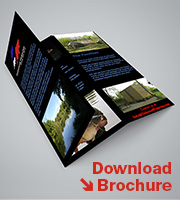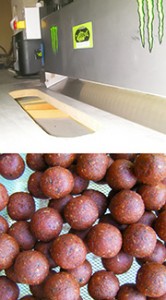Good Carp Care
Fish welfare comes before anything else.
When fishing at Oakwood Fisheries you will be required to follow our good carp care guide.
Ensure that your kit is laid out ready with the weigh sling laid inside the cradle, having your carp anti septic, forceps scales and camera easily accessible. Weigh slings fit perfectly inside carp cradle’s and they should be laid out like this ready. This method makes the whole procedure easy once you have laid the carp in the cradle remove the net by carefully lifting the carp up approximately 30cm and slid the net out from underneath the carp. The carp can then be placed back down and is already in the sling ready to be un-hooked, photographed and weighed.
1. With the carp safely in the net, cut the line mainline and if possible remove the lead. This prevents pressure being applied to the hook when carrying the fish to the mat and takes away the awkwardness of struggling with a fish, net and rod!
2. Wet the sling and mat using the water bucket provided, always use plenty of fresh water from the lake, not hot water that has been sat in the bucket for hours. Zero your scales with the sling wet.
3. Before the carp is handled please remove any watches, bracelets and rings which could cause damage during handling.
4. Break down the landing net and check that the fins of the carp are folded flat against its body, and then lift the fish in the net on its side and take it to the mat and lay it down also on its side. Never stand the fish up on its belly as this places pressure on its internal organs which can cause damage. Remember that a carp is always supported in its environment by the water that surrounds it and when it is out of the water gravity exerts unnatural forces on the fish.
5. Now carefully lift the carp up no more than 30cm and slid the landing net out from underneath the fish. This is to prevent abrasion marks on the carp should they flap.
6. You are now ready to remove the hook. Unhook the fish carefully paying special attention to the way the hook has gone in and bend the hook out the same way. Inspect the mouth of the fish and apply anti-septic to the hook exit point. Also check the body of the fish over and apply carp anti-septic to any other areas that have been damaged including lifted scales.
7. If you wish to take a photograph of the fish this is the time to do so. Take all pictures before you weigh the fish.
8. After any photographs, zip up the weigh sling at both ends, check again that the carp is lying on its side weigh and record the weight and then return it to the water in the sling. Ensure that you are in sufficient depth of water, open the exit zip on one end of the sling and hold the sling open until the fish swims off of its own free will.
The above procedure should take no longer than 3 or 4 minutes.
During hot weather the fish should be returned to the lake as quickly as possible.
9. Please take your time playing the fish, applying no more pressure than is needed. As heavy handed tactics puts excessive pressure on the hook and increases the chance that the fish will suffer hook damage. This is especially true when the fish is on a short line prior to netting.
In this way we can all continue to enjoy catching carp that are in superb condition. Thank You.











